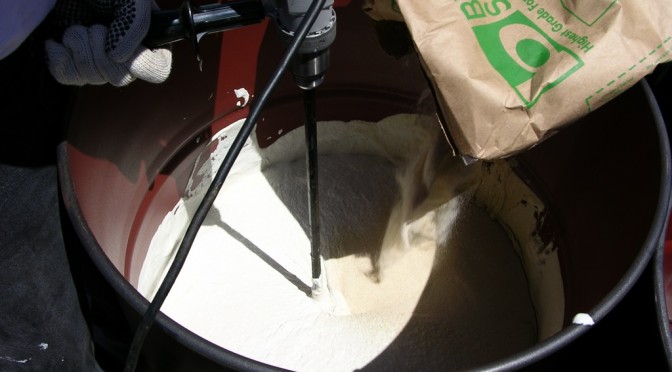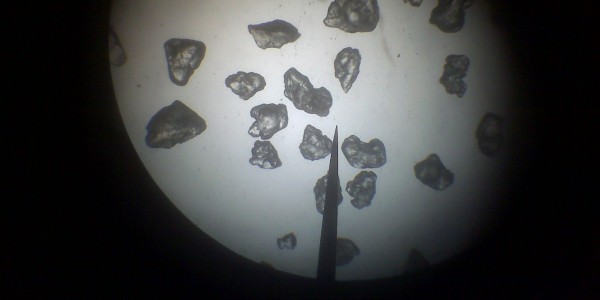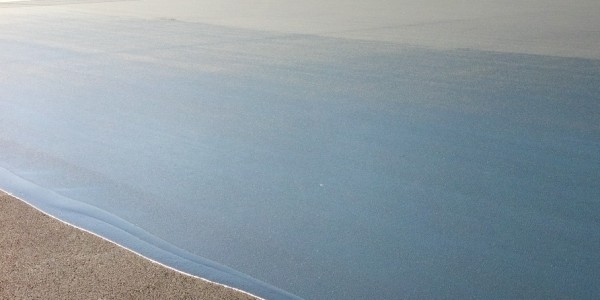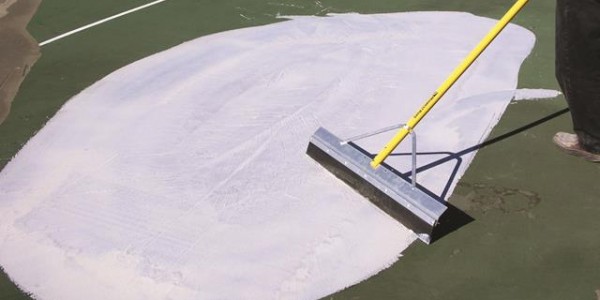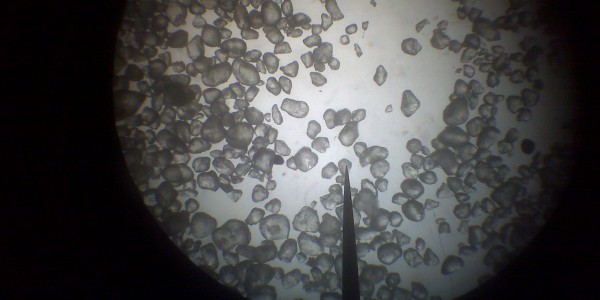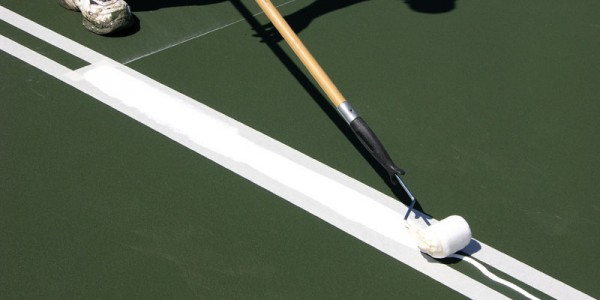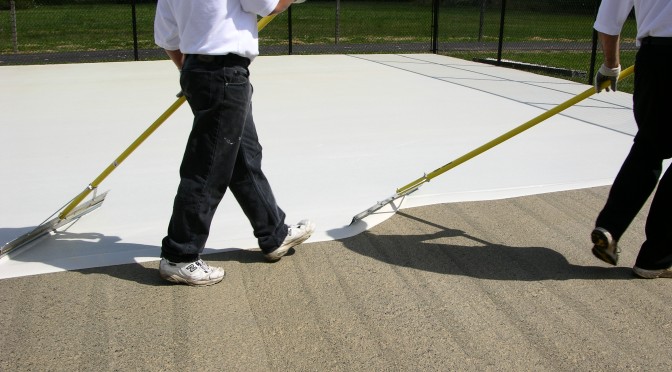Using the correct size and shape of silica sand is very important to each specific coating or repair product used in tennis court resurfacing. The right kind of sand is integral to the performance of each tennis court coating, patch material, or crack filler. Without the proper sand type and amount, a coat cannot achieve its purpose.
Tennis Court Coating Coverage Rates
Tennis court coatings are squeegee applied. The squeegee floats at the highest point of a coating, so if you are using a larger silica sand, the squeegee rides higher. This will generally yield a thicker coat and use more coating, unless there are lots of asphalt voids and the sand it pushed down into them. If a finer sand is used, as in the color coats, you will use a little less material and put a thinner coat.
Silica Sand for Acrylic Resurfacer and Acrylic Patch Binder (50-60 Mesh)
The size and shape of silica sands both have a specific purpose. The lower the number, the larger the particle size (in the AFS scale of measurement). Since Acrylic Resurfacer and Acrylic Patch Binder are both filling voids in asphalt and concrete, the larger mesh size is better. Also the angular shape allows the sand to key together and form a nice, strong base film or patch. Acrylic Resurfacer is also designed to provide a consistent, but somewhat rough surface. This helps the color coating grab on and apply at the correct thickness for good coverage and long wear.
Silica Sand for Tennis Court Color Coatings and Line Paint (Rounded 80-100 Mesh)
The silica sand that is commonly used in color coatings is finer and mostly rounded. The rounded shape helps the sand to roll under the squeegee, instead of dragging through like a small stone that fell into the puddle. This helps to minimize surface streaking and provide a smoother, blemish-free surface. The smoother finish also reduces the amount of tennis ball fuzz, which creates more housekeeping issues in indoor tennis clubs and facilities.
SportMaster tennis court coatings are manufactured with fibers, which will also minimize tools marks and streaks in the color coatings. The use of fibers is a big help, since many court owners and players are looking to slow down the play by using larger and more angular-shaped silica sands in the colored tennis court surface coatings. The fiber-containing formula of SportMaster enables them to have the surface speed they want, with less streaking than most other brands.

